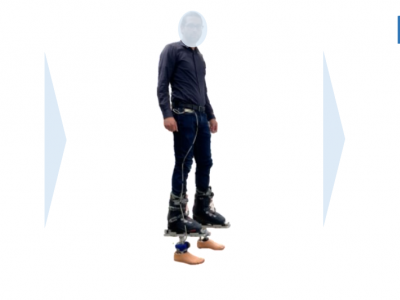Artificial Intelligence
The experimental protocol provided to record for two minutes two IMUs channels assembled on a variable stiffness prosthetic foot (one on the main body of the prosthesis and the other on the ankle), 3-axis linear accelerations (ax , ay and az) and 3-axis Euler angles (θx , θy and θz), at 100 Hz for seven activities (walking, fast walking, stand, stairs and ramps ascending and descending) under different Dx slider configurations (Dx = 42, 45, 48, 51, and 54 mm), i.e. stiffness settings.
- Categories:
 129 Views
129 Views
We present a dataset of histopathology images from OSCC patients treated at Sun Yat-sen Memorial Hospital (2015–2022). Each case includes two tissue sections (core and boundary), with six images per patient captured at ×200, ×400, and ×1000 magnifications (2592×1944 pixels). Key histopathological features—such as cancer cells, nests, keratin pearls, nuclear atypia, and necrosis—are included. The study was approved by the Ethics Committee with a waiver of informed consent, and patient-level diagnosis and prognosis annotations were obtained from electronic records.
- Categories:
 16 Views
16 Views
Artificial Intelligence (AI) has increasingly influenced modern society, recently in particular through significant advancements in Large Language Models (LLMs). However, high computational and storage demands of LLMs still limit their deployment in resource-constrained environments. Knowledge distillation addresses this challenge by training a smaller language model (student) from a larger one (teacher). Previous research has introduced several distillation methods for both generating training data and training the student model.
- Categories:
 20 Views
20 Views
Artificial Intelligence (AI) has increasingly influenced modern society, recently in particular through significant advancements in Large Language Models (LLMs). However, high computational and storage demands of LLMs still limit their deployment in resource-constrained environments. Knowledge distillation addresses this challenge by training a smaller language model (student) from a larger one (teacher). Previous research has introduced several distillation methods for both generating training data and training the student model.
- Categories:
 20 Views
20 Views
Data associated with the article: "PM2.5 Retrieval with Sentinel-5P Data over Europe Exploiting Deep Learning"
- Categories:
 23 Views
23 Views
Semiconductor manufacturing is a highly complex process requiring precise control and monitoring to maintain product quality and yield. This research presents a comprehensive comparative analysis of three machine learning algorithms—Random Forest, Support Vector Machine (SVM), and XGBoost—for anomaly detection in semiconductor fabrication. Through extensive experimentation using a real-world wafer dataset, we demonstrate that XGBoost outperforms other models, achieving 97.1\% accuracy, 96.4\% precision, and 95.0\% recall.
- Categories:
 23 Views
23 Views
This dataset, constructed around the Jilin Baishan Incident, aims to enhance the emotion prediction capabilities of large language models. Approximately 3.5 million raw comments were collected via the Weibo API, covering key information such as user identifiers, text content, timestamps, and interaction metrics. The data underwent preprocessing steps including normalization, Chinese tokenization, stopword removal, deduplication, and anomalous sample exclusion.
- Categories:
 Views
Views
The UQTR dataset consists of 7838 real and synthetic images of the Université du Québec à Trois-Rivières (UQTR) campus road under normal and snow conditions. The image resolution is 1280×720. It includes lane labels in .txt files, where each row stores the set of points of a lane. The points are stored as x1 y1 x2 y2, as in the tutorial by Ruijin Liu, Zejian Yuan, Tie Liu, Zhiliang Xiong: Train and Test Your Custom Data.
- Categories:
 213 Views
213 Views
The data is derived from 22,898 comments on driverless and human driving obtained by crawler technology on China's Weibo and XiaoHongshu platforms from May 1 to August 31, 2024. The main data formats are xlsx, py, txt, json and so on. The files in py format are script files, which are used to process data. The dataset was eventually used for topic mining, sentiment analysis, and more on Chinese users' comments on driverless and human driving.
- Categories:
 33 Views
33 Views
Walnut and Heart CT Data corresponding to Noisier2Inverse consist of high-resolution computed tomography (CT) scans used for evaluating deep learning-based image reconstruction under severe noise conditions. The dataset includes walnut CT scans from controlled experimental settings and clinical cardiac CT images. The Walnut data stems from this source: https://paperswithcode.com/dataset/cbct-walnut, and the Heart CT data is processed in python before, and is provided in .pt format.
- Categories:
 24 Views
24 Views
